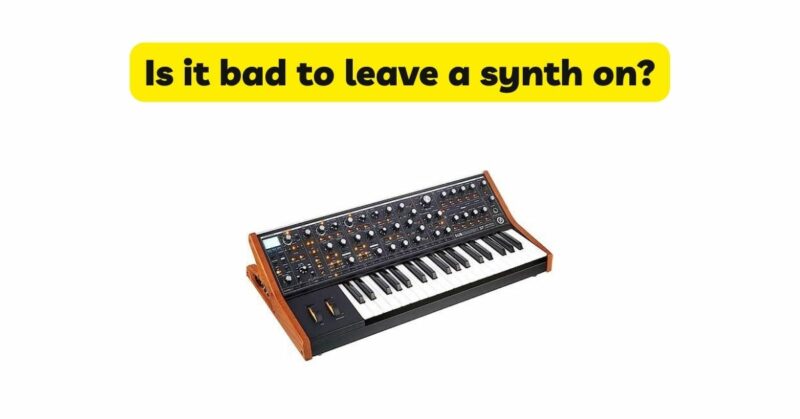When it comes to operating synthesizers, one question that often arises is whether it is detrimental to leave them turned on for extended periods. In this article, we will explore the potential drawbacks and benefits of leaving synthesizers on continuously. By understanding the implications, musicians can make informed decisions regarding the operational practices of their synthesizers.
The Potential Drawbacks:
- Increased Energy Consumption: Leaving synthesizers on for prolonged periods can result in higher energy consumption. Depending on the model and features, synthesizers can draw a significant amount of power, which can lead to increased electricity bills and a larger carbon footprint. This consideration is especially important for those conscious of energy usage and sustainability.
- Component Wear: Continuous operation may subject synthesizers to prolonged stress, potentially leading to increased wear on internal components. Over time, this wear can impact the overall longevity and reliability of the instrument. Components such as power supplies, circuit boards, and electronic components may be more susceptible to degradation when exposed to extended periods of power.
- Heat Generation: Synthesizers generate heat while in operation. Leaving them on continuously can result in extended exposure to heat, potentially affecting the performance and lifespan of certain components. Adequate ventilation and temperature control are essential to mitigate any potential risks associated with excessive heat generation.
The Potential Benefits:
- Convenience and Workflow: Keeping a synthesizer turned on can offer convenience and streamline workflow, particularly in situations where immediate access to the instrument is required. Musicians in studios or home setups may find it advantageous to have their synthesizers ready for immediate use, without the need to power up and initialize the device each time. This can be especially beneficial during live performances or when creative inspiration strikes.
- Reduced Initialization Time: Synthesizers often require time to initialize and load presets when powered on. By leaving the synthesizer on, users can save time and bypass the initialization process, allowing for more immediate experimentation and sound creation. This can be particularly valuable in recording sessions or when working under time constraints.
- Software Updates and Patch Management: Some synthesizers receive firmware updates and software patches that improve performance or add new features. Leaving the synthesizer turned on ensures that it remains connected to the manufacturer’s servers, allowing for seamless updates and patch management. This can enhance the overall functionality and sound capabilities of the instrument.
Finding a Balance: While there are potential drawbacks and benefits to leaving synthesizers on, finding a balance is key. Consider the following strategies:
- Power-Saving Modes: Many synthesizers feature power-saving modes or automatic standby functions that activate after a period of inactivity. Utilizing these features can significantly reduce power consumption during idle times, mitigating the environmental impact and minimizing energy costs.
- Scheduled Power Cycles: If leaving the synthesizer on continuously is not necessary, consider implementing a regular power cycle schedule. Powering off the synthesizer during extended periods of non-use or overnight can help conserve energy and reduce wear on internal components.
- Temperature and Ventilation Control: Adequate ventilation and temperature control are crucial for maintaining optimal operating conditions for synthesizers. Ensure that the instrument is placed in a well-ventilated area and not exposed to extreme heat or humidity, regardless of whether it is left on or turned off.
- Consider Environmental Impact: With increasing concerns about climate change and environmental sustainability, it is important to be mindful of energy consumption. Incorporate energy-efficient practices and equipment into your setup, such as using power strips with energy-saving features or exploring renewable energy sources for powering your music production setup.
Conclusion: Leaving synthesizers on continuously comes with potential drawbacks related to increased energy consumption, component wear, and heat generation. However, there are also benefits in terms of convenience, workflow, and patch management. Musicians must find a balance that aligns with their individual needs, preferences, and environmental considerations.
Utilizing power-saving modes, implementing scheduled power cycles, and ensuring proper temperature and ventilation control can help mitigate potential risks while still enjoying the convenience of an always-on synthesizer. Ultimately, the decision to leave a synthesizer on or turn it off depends on personal requirements, usage patterns, and the desire to strike a balance between operational convenience and environmental sustainability.


